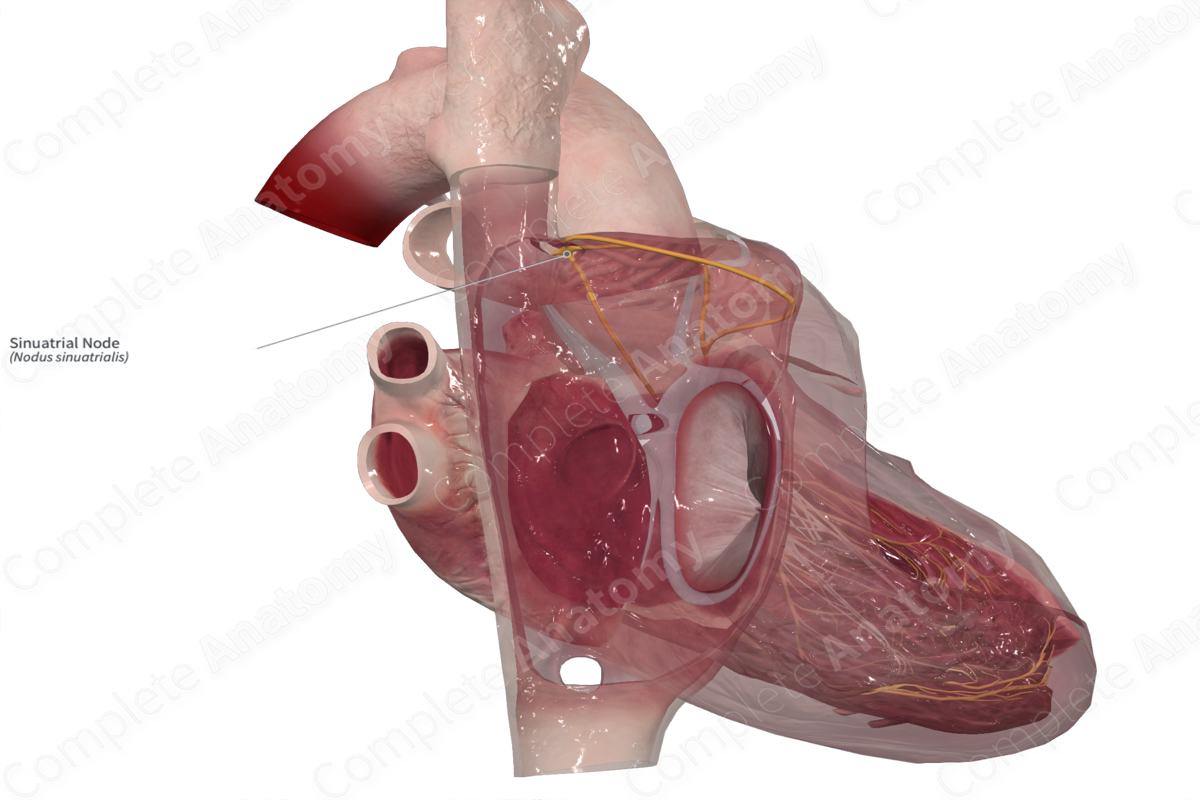
Description
The sinuatrial node (or SA node) is located in the upper part of the right atrium, just lateral to the superior vena caval opening. The SA node is a group of highly specialized cardiac muscle fibers that depolarize and produce action potentials. These electrical impulses are generated automatically in a rhythmic fashion, occurring roughly 70–75 times per minute. Thus, the SA node is referred to as the pacemaker of the heart. External input from the sympathetic and parasympathetic nerves of the cardiac plexus increase or decrease the rate at which they produce action potentials, respectively.
Like most of the cells of the cardiac conduction system, and unlike typical myocardial cells, the cells of the SA node have few myofibers and are only weakly contractile. Their chief purpose is to initiate the electrical impulse that will spread throughout the heart and cause contraction.
The SA node conducts its depolarizing action potential to two areas. First, it spreads throughout the left and right atria, causing atrial contraction. Second, it sends the depolarizing action potential, via the intranodal tracts, to the atrioventricular (AV) node that is located in the inferior interatrial septum. Subsequently the signal propagates to the rest of the heart (Katz, 2010; Anderson et al., 2009).
Related parts of the anatomy
List of Clinical Correlates
—Sinus bradycardia
—Sinus tachycardia
—Sick sinus syndrome
References
Anderson, R. H., Yanni, J., Boyett, M. R., Chandler, N. J. and Dobrzynski, H. (2009) 'The anatomy of the cardiac conduction system', Clin Anat, 22(1), pp. 99-113.
Katz, A. M. (2010) Physiology of the Heart. M - Medicine Series: Wolters Kluwer Health/Lippincott Williams & Wilkins Health.
Learn more about this topic from other Elsevier products





